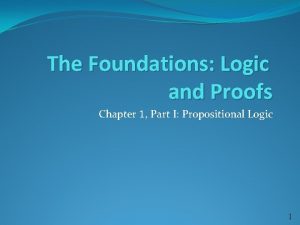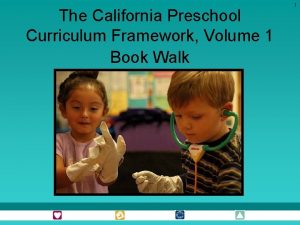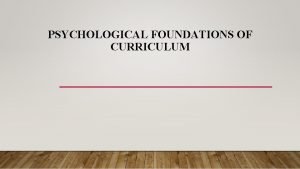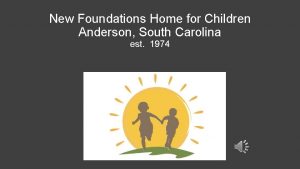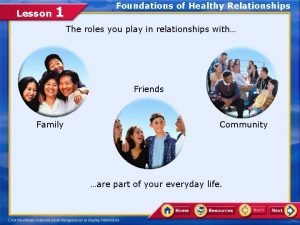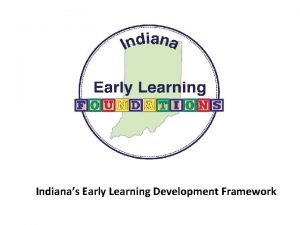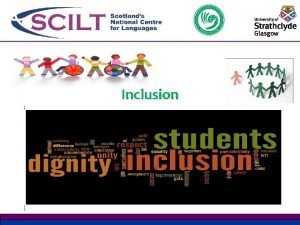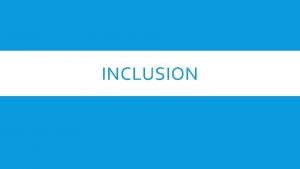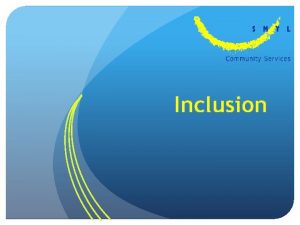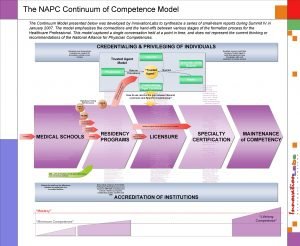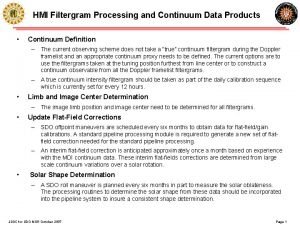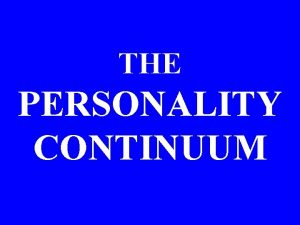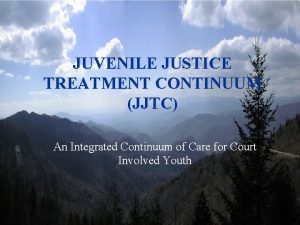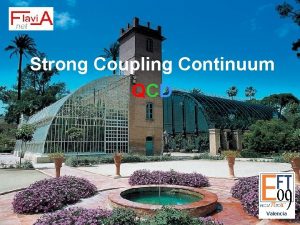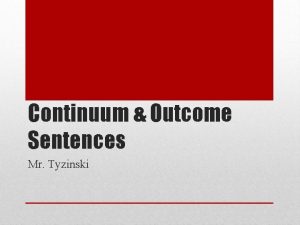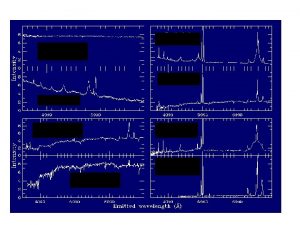Continuum of Services Foundations of Inclusion Why Inclusion












- Slides: 12

Continuum of Services

Foundations of Inclusion • • Why Inclusion? Human potential movement General systems theory Principle of Normalization Self-determination movement

Continuum • • • Full Inclusion model Collaborative/supportive model Social mainstreaming Home class model Resource room pull-out model Nonacademic model Mainstreamed model Self-contained model Other options

Full Inclusion model • Reg. Ed. 100% – Music Ed. may consult with classroom teacher, special educator, music therapist, other professionals to develop appropriate instructional adaptations.

Collaborative/supported instruction model • Gen Ed. and Spec. Ed. teachers work together to meet instructional needs. • Option of team teaching – Music Ed. may consult with classroom teacher, special educator, music therapist, other professionals to develop appropriate instructional adaptations.

Social Mainstreaming • Students with severe disabilities included in reg. classroom for social development • Student is not expected to meet curricular demands of the typical students – Attends Music class with same age peers. – Mus. Ed. makes adaptations to include student in music experiences.

Home Class model • Student begins and ends day with reg. ed. peers, but attends special programming for the remainder of the day. – Mus Ed. provides age and ability appropriate music experiences. – Student may attend Music programming with reg. ed. peers OR have music in self-contained setting.

Resource Room Pull-out model • Student is educated in gen ed. classroom. • Spec. Ed. professionals pull student out for individualized services (speech tx, physical tx, music tx…) – Student attends music classes with regular classroom peers.

Nonacademic model • Student educated primarily in selfcontained classroom – Joins music class with same aged peers

Mainstream model • Student participates in selected gen. ed. classes with same aged peers- such as art, music, & phys. ed. • Student is expected to maintain appropriate performance levels and behaviors. – Mus Ed. addresses objectives found on IEP and should consult for adaptation ideas

Self-contained model • Student is educated in spec. ed. classroom for entire day. – Mus. Ed. often asked to provide age and ability appropriate music experiences for entire spec. ed. class – Focus of music is Music learning

Other Options • Separate schools for specific types of disabilities • Residential facility • Homebound or Hospital placement – Music therapist provides individualized treatment in 1: 1 and group settings. – Music learning may be an aspect of treatment goals
 Andreas carlsson bye bye bye
Andreas carlsson bye bye bye Goods-to-services continuum
Goods-to-services continuum Role of operations manager
Role of operations manager Dont ask
Dont ask Intserv vs diffserv
Intserv vs diffserv Wake county human services community services center
Wake county human services community services center The foundations logic and proofs
The foundations logic and proofs Preschool curriculum framework volume 1
Preschool curriculum framework volume 1 Behaviorism vs humanism
Behaviorism vs humanism New foundations home for child anderson sc
New foundations home for child anderson sc Chapter 6 lesson 1 foundations of a healthy relationship
Chapter 6 lesson 1 foundations of a healthy relationship Indiana learning foundations
Indiana learning foundations






